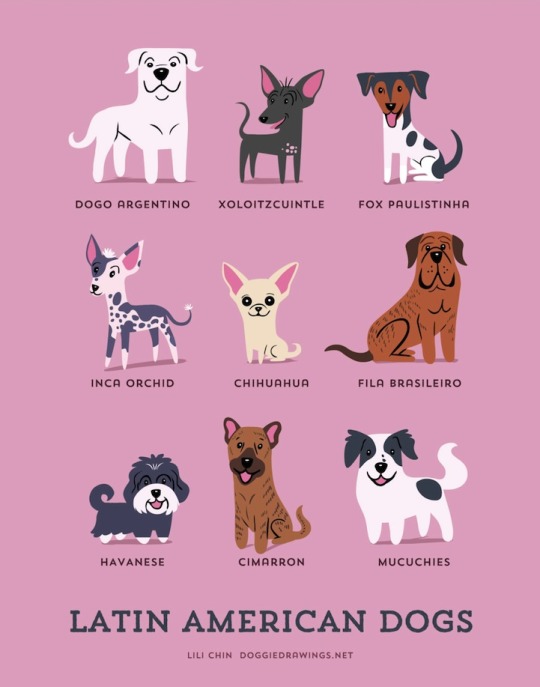Note
What factors do you think allowed many dinosaur species (particularly sauropods) to attain large sizes that relatively few land mammal species could reach and bigger?
I’ll specifically address sauropods (Sander et al., 2010), because theropods are pretty tame in terms of how large they got and are still relatively comparable to modern mammals. Over the course of sauropod evolution, however, this happened:

(Src, src)
What happened that caused them to get so large? The following discussion will be my summary of Sander et al. (2010)’s conclusions.
There are a lot of misconceptions surrounding this topic. It had nothing to do with oxygen or CO2 or extreme temperature or plant nutrition or exceptional habitat productivity. Sander et al. (2010) go into substantially more detail on this topic but for now we’ll leave it at that.
The possible factors allowing for sauropod gigantism can be broken down into three categories.

(Sander et al., 2010)
Their anatomy allowed them to get more resources.
Their long necks had two primary advantages: they could reach further, and they only needed to move their neck while feeding, which is a very energy-efficient way to feed.
They probably processed their food for a relatively long time, which allowed them to obtain more nutrition.
They likely had lungs like birds - incredibly efficient mechanisms of taking in oxygen that would have allowed them to go giant without being constrained by breathing.
Sauropods don’t need to chew, meaning that they don’t require strong muscles in the head; this was conducive to long necks because they really don’t need to support the head.

(Src)
They were good at conserving resources.
Their bones were lightweight and pneumatized, which means they needed less energy to sustain themselves.
Their avian lungs, powered by efficient muscles, likely didn’t need much energy to operate either.
The air sacs associated with this respiratory system likely lightened them further.
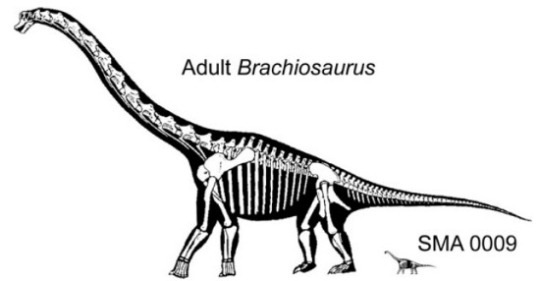
(Src)
They grew faster both as individuals and as populations.
Sauropods were likely r-selected like birds, which means that they gave birth to many small offspring at a time, and therefore their population recovery rates were high; due to relatively short average lifespans, individuals also likely used less resources.
They likely had high body mass ratios and growth rates, as well as high metabolisms - these are preconditions of such gigantism.
Forgot - tagging @a-dinosaur-a-day because of earlier ask.
30 notes
·
View notes
Text
The National Science Foundation is suspending the Collections in Support of Biological Research (CSBR) Program and here’s why I care
Every year, an arm of the NSF devoted to Natural History collections offers grants to support the care, maintenance, and growth of research collections (like, museums). This arm plays an important role in ongoing efforts of specimen digitization (this is a loooong process which takes a ton of people to upload data about every specimen in every collection so the information can be available to researchers anywhere), and basic specimen care (buying new storage, and ensuring longevity of collections). These funds also pay for the people required to handle all of the work.
Now, the NSF has stated they are placing this program on hiatus as of this month, and will not be accepting proposals for this year. The page says they are looking to reevaluate long term resource needs and priorities.
I’ve met Roland Roberts, one of the Program Officers for this area, and he’s passionate about the ongoing communication efforts and care that these collections need. So, this isn’t an alarmist post raving at the NSF, and at this time I have no reason to believe the hiatus will extend beyond this year. In the long term, perhaps it will be a good thing. Like, it’s not a bad idea to stop and take stock of what you’re doing if your goals need to change. It’s a form of progress.
But why I care and why I believe it’s important for you to care is that these grants are responsible for a lot of the funding that small collections – university collections – require for their maintenance. We were in the midst of writing a proposal for a CSBR grant when I was at the University of Montana Zoological Museum, and setbacks and delays postponed the proposal to the point our principal investigator lost his job and could no longer be the authority on the proposal. Indefinite delays led to us being unable to plan long term for our fish collection, which was eventually shipped to another university (and they didn’t take all of it). With no grants coming in and our curator ultimately leaving, the collection was placed in a limbo, a hiatus on its own. Students and volunteers continued to come into the museum and utilize its resources - it did not lose its value in that way - but the university’s administration was less compelled to see the museum as a priority area, especially amidst campus-wide budget cuts.
I am saying this because we need you. We need advocates. We need students interested in natural history collections to speak up about budget cuts for collections and let those in charge know that we are paying attention. Because the NSF has decided to put this program on hiatus, I am aware of many students (graduate, postdoc and otherwise) who will not have funding for 2016, and collections that will sit for another year, underutilized. We cannot let cumulative delays snowball into an overall apathy towards collections and their importance across disciplines.
It’s days like this I deeply miss being in a small university collection. I understood it was vulnerable but I believed I could make a difference – and I did, while I was there. This is why we need you. This is why we push university administrators and say we need Chief Curiosity Correspondents and science communicators and students who are doing the research so we have things to communicate. My job wouldn’t have half of the meaning it does if there was nobody utilizing the specimens. We don’t keep museum collections like stamps or baseball cards – they need to be cared for, used, and they need life. They need opportunities to reach their potential, and so do you. I will be keeping a close eye on this and I hope you will, too.
648 notes
·
View notes
Photo

“Last night I photographed a Barn Owl hovering above prey at a local farm where I have been baiting them for some time, I did attempt this last winter but failed due to the lens misting, still a work in progress” ~ Roy Rimmer
129K notes
·
View notes
Photo

Fricatives are a category of speech sound. They are distinctive in that they are made by producing a turbulent airflow. That means that you let some air keep flowing out from your lungs and through your vocal tract (then out of your mouth), but you do so by pushing that air through a very narrow opening.
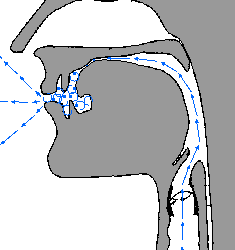
[x] (This is an [s] production)
When the constriction (narrow opening) is very close to the end of the vocal tract, like when the lower lip touches the upper teeth, the sound produced is either [v] as in “very” or [f] as in “ferry”.

When the constriction is slightly further back, and the tongue is touching the teeth, the sound produced is either [ð] as in “the” or [θ] “think”. These sounds are written with “th” in English. Since they’re so similar to [v]/[f] and pretty close to [d]/[t], too, lots of dialects of English shift the pronunciation of [ð]\[θ] to one of those other sounds.

When the constriction is at the alveolar ridge, the sound is [z] as in “zoo” or [s] as in “sue”.

And when the constriction is slightly further back, the sound is [ʒ] as in “genre”/“measure”/“beige” or [ʃ] as in “shipping”.

What’s really awesome about fricatives, though, is how they look on a spectrogram. They’re all aperiodic sound (especially the voiceless ones below), but they don’t all look alike:
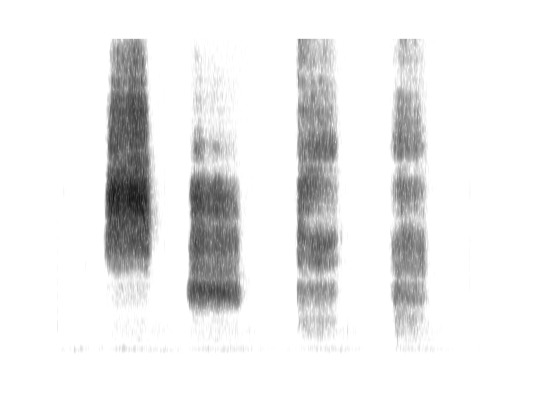
From left to right: [s] – [ʃ] – [θ] – [f]
[s] - Very high energy in the highest frequencies
[ʃ] - High energy, but in much lower frequencies than [s]
[θ] - So similar to [f], but slightly higher energy in the higher frequencies
[f] - Lowest energy (quietest) with lower frequencies overall
👍[θumz up]!
669 notes
·
View notes
Text
Remember kids: Pluto is not a planet, WAS never a planet, and any acknowledgement of Pluto as a planet was an error of assumption
27K notes
·
View notes
Text
T thing/ explain to me why Norwegian has two written languages.
8K notes
·
View notes
Note
What would be the explanation for the absence of pythons in Madagascar?
This is a fantastic question, and one that is rather contentious, and takes quite a lot of answering. So I’m sorry this has taken weeks to put together, but here is the extremely long answer to the question:
Until recently, it was believed that mainland Africa had only pythons and a single group of boas (sandboas, genus Eryx), while the rest of the boas boas were restricted to the Americas… and Madagascar.
Madagascar’s large constricting snakes were assigned in their early descriptions to the Boidae. Indeed, so alike are Madagascar’s boas to those of the Americas that it misled phylogenetic reconstructions of them:
In 1991, based solely on morphological characters (molecular phylogenetics was in its infancy), Kluge found Acrantophis and Sanzinia to be sister to the South American genus Boa. And so he synonymised them, transferring the Malagasy boas to the South American genus, thus rendering a genus Boa with the following members: Boa constrictor (and subspecies thereof), B. madagascariensis, B. dumerili, and B. manditra - Sanzinia madagascariensis obviously couldn’t become Boa madagascariensis, because Acrantophis madagascariensis had already taken that name, so he erected a new name for this species.
As it turns out, moving Madagascar’s boas to the genus Boa was a huge mistake. But Madagascar’s boas are boas (Family Boidae: Subfamily Sanziniinae), they just don’t belong in the genus Boa. A phylogeny produced by Noonan & Chippindale (2006a) showed that the genus Boa belongs to a neotropical clade, together with Epicrates, Eunectes, and Corallus. These are closest related to a group containing Afro-Indian Eryx plus Candoia from Papua New Guinea. These together are then related to the North and Central American boas (Exiliboa+Lichanura+Charina). Finally, sister to this whole group of New World+Australiasian boas is a clade containing Calabaria, Acrantophis, and Sanzinia. This whole group is formalised as Boidae, and is sister to the Pythonidae in the Noonan & Chippindale phylogeny.
Until this point, Calabaria were thought to be allied to pythons and not to boas, but the molecular work of this and subsequent studies showed that to be quite incorrect. So boom, another group of boas is present in Africa. Woo.
All subsequent phylogenies (and several earlier ones that I can’t be bothered to go find) have supported this view that Madagascar’s boas belong in their own genera (Sanzinia and Acrantophis), and yet still Wikipedia would have you believe that they are in Boa. I will fix this in the next few weeks, but in the mean time, ignore it. Focus on my argument here.
In light of more complete taxonomic and genetic sampling by Pyron et al. (2013), it was shown that boas and pythons aren’t even sister groups (which we knew before, but never with quite such nice resolution and such high taxon sampling). Rather Boidae+Calabaridae are sister to a group containing Anomochilidae+Cylindrophiidae+Uropeltidae+Xenopeltidae+Loxocemidae+Pythonidae. Together, these two clades comprise the superfamily Henophidia (ancient snakes), which is paraphyletic with regards to all other snakes except the blind snakes, but shh we can ignore that for now.
Anyway, the important thing is that both of these reports (Noonan & Chippindale 2006a and Pyron et al. 2013) agree on one key point: Madagascar’s boas are unequivocally the oldest radiation of boas.
How, then, did Madagascar’s boas get to Madagascar? Well, Noonan & Chippindale (2006a, 2006b) suggested a vicariant origin; that they were in Madagascar when it broke off from Gondwana as it split. This vicariant origin is further supported by the rapid diversification in deep branches in the boids (Noonan & Chippindale 2006a).
However, the age of the African clade (Calabaria+Acrantophis+Sanzinia) suggested by Noonan & Chippindale (2006a, 2006b) is 30 million years after Madagascar lost contact with Antarctica, and through Antartica, South America; and 11 million years after Madagascar lost contact with India and became isolated (Samonds et al. 2013). It would be prudent therefore to interpret this as either incorrect inferrence by Noonan & Chippindale in both papers, or indication of oceanic dispersal. I lean towards the results of Noonan & Chippindale being wrong because of the way they calculated their clade ages (poor outgroup choice with an incorrect date).
After the split from Africa, Madagascar maintained connection with India and, through a land bridge connecting to Antarctica, was connected to South America, and could continue to exchange species with it for at least a few million years (Noonan & Chippindale 2006a; Samonds et al. 2013). This left Madagascar with its own boas, one of which apparently dispersed to Africa to give rise to Calabaria. Not until much later did Madagascar’s modern boa genera arise on the island.
Today, most authors (e.g. Pyron et al. 2013; Reynolds et al. 2014) tend to assume that Calabaria, which is a troublesome group, genetically, is actually basal to all boas, and do not include it in the true boas. They do not, however ,make any comment on the implications of this, in terms of origins.
Bizarrely, the Round Island Boa (Casarea dussumieri) is not related to those of Madagascar at all (Round Island is very close to Madagascar - just north of Mauritius), but is instead most closely related to a Malaysian lineage, and only distantly related to other constrictors at all (Reynolds et al. 2014). How it fits into this picture is very unclear.
The implication then is that pythons and boas split long before Madagascar broke off from Africa. Very recent (read: not yet physically published but available online) research by Reynolds et al. (2014) has suggested an origin for the modern pythons in what is today northern Africa, whence they then spread south, north, and east. The boas, on the other hand, are suggested to have arisen in southern Gondwana by some authors (Reynolds et al. 2014) and Asia by others (Noonan & Sites 2010).
But the problem is that Reynolds et al. (2014), and indeed all authors working on the relationships of the Henophidian snakes, have not attempted to figure out where and when the other families arose. Thus, we have no idea where the ancestors were at the time of the split of Gondwana. All we can postulate is that Madagascar had boas when it split off (perhaps getting them after Africa was isolated from the rest of Gondwana via land bridges to Antarctica+South America; Samonds et al. 2013), while pythons were further up in Africa somewhere. Then, when pythons radiated down into Africa, they didn’t make it across to Madagascar - or if they did, they went extinct soon afterwards.
tl;dr: Nobody knows for sure. Nobody has really even tried to find out. Probably because it’s not a very interesting question (relatively speaking).
References:
Kluge, A. G. (1991) ‘Boine snake phylogeny and research cycles’ Miscellaneous Publications, Museum of Zoology, University of Michigan 178:1-58
Noonan, B. P. & P T. Chippindale (2006a) ‘Dispersal and vicariance: The complex evolutionary history of boid snakes’ Molecular Phylogenetics and Evolution 40:347-358
Noonan, B. P. & P T. Chippindale (2006b) ‘Vicariant Origin of Malagasy Reptiles Supports Late Cretaceous Antarctic Land Bridge’ The American Naturalist 168(6):730-741
Noonan, B. P. & J. W. Sites Jr. (2010) ‘Tracing the origins of iguanid lizards and boine snakes of the Pacific’ The American Naturalist 175(1):61-72
Pyron, R. A., F. T. Burbrink & J. J. Wiens (2013) ‘A phylogeny and revised classification of Squamata, including 4161 species of lizards and snakes’ BMC Evolutionary Biology 13:93
Reynolds, R. G., M. L. Niemiller & L. J. Revell (2014) ‘Toward a Tree-of-Life for the boas and pythons: Multilocus species-level phylogeny with unprecedented taxon sampling’ Molecular Phylogenetics and Evolution 71:201-213
Samonds, K. E., L. R. Godfrey, J. R. Ali, S. M. Goodman, M. Vences, M. R. Sutherland, M. T. Irwin & D. W. Krause (2013) ‘Imperfect isolation: factors and filters shaping Madagascar’s extant vertebrate fauna’ PLoS One 8(4):e62086
78 notes
·
View notes
Photo
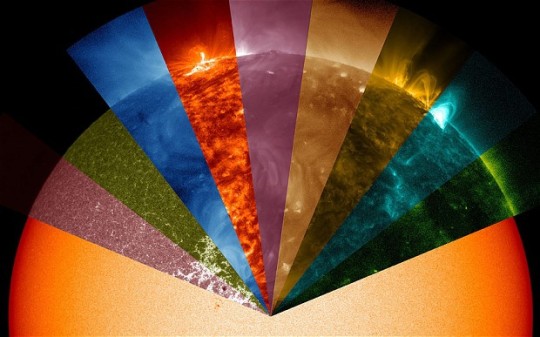
‘Irreplaceable Scientific Data Must Be Saved’:
Researchers at the University of British Columbia chose a random set of of 516 studies published between 1991 and 2001 and found that all data from the two-year-old papers was still available but that the chance of it still existing fell off by 17 per cent for each year of age.
The paper, published this week in Current Biology, warns that scientists are “poor stewards of their data” and calls for journals to begin uploading information onto public archives so it can be preserved for the future.
Having access to the raw data of a study is vital in order for other scientists to asses, replicate or build on that work.
Data was requested from the authors of each of the randomly-chosen studies, but the researchers found that the odds for even finding a working email address declined by seven per cent each year since publication.
Tim Vines, a visiting scholar at the University of British Columbia and one of the authors of the paper, said: “Publicly funded science generates an extraordinary amount of data each year. Much of these data are unique to a time and place, and is thus irreplaceable, and many other datasets are expensive to regenerate.
“The current system of leaving data with authors means that almost all of it is lost over time, unavailable for validation of the original results or to use for entirely new purposes.
“I don’t think anybody expects to easily obtain data from a 50-year-old paper, but to find that almost all the datasets are gone at 20 years was a bit of a surprise.”
Vines argues that papers with readily accessible data are more valuable for society and thus should get priority for publication.
“Losing data is a waste of research funds and it limits how we can do science. Concerted action is needed to ensure it is saved for future research,” he said.
#data#scientific research#loss of data#maybe it should be on the entities publishing a work to maintain a good archive of the supporting data?
158 notes
·
View notes
Photo
Ok but this article actually doesn’t even touch on the coolest part of the Falcons 9 and Heavy - reusability.
Typically, rockets are single-use. As stages fall off they’re allowed to just fall and burn up or smash on reimpact. As you can imagine, the cost of a rocket is much, much higher than the cost of just the fuel for the rocket, so if they can be made reusable we might see the cost of spaceflight reduce substantially.
This hasn’t been done before, because it’s really hard. Ever tried to balance a pencil upright on the tip of your finger? Now imagine that pencil is 135 ft long and falling at hundreds or thousands of miles an hour. Imagine too that from orbit you have to guide the pencile with your finger back to land on a landing pad only a few dozen meters wide.
SpaceX achieved successful recovery of a first stage for the first time less than a month ago, on December 21, 2015. At some point, the company plans to have entire rockets be reusable (not for the Falcon 9), but even at present the idea of a Falcon Heavy taking off and in mid flight dropping three separate first stages which are all autonomously guided to safe landings is pretty amazing!
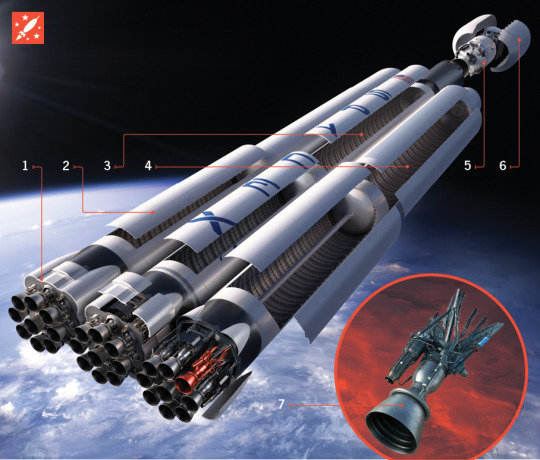

How It Works: The Most Powerful Space Rocket
When the firm SpaceX launches its Falcon Heavy rocket into space late this year, the craft will become the mightiest rocket in the world. Only NASA’s Saturn V, which sent Americans to the moon, has ever generated more power. In rockets, the most important measure of power is thrust. Falcon Heavy’s 27 individual booster engines together generate 3.8 million pounds of thrust—enough to lift the 3.1-million-pound rocket and its 117,000-pound payload toward low-Earth orbit. The rocket’s success is critical for both SpaceX and the U.S. space program: The Air Force has already hired SpaceX and its Falcon Heavy to send two satellites into orbit sometime in 2015.
1) ENGINE CLUSTER
Nine SpaceX Merlin 1D engines sit at the bottom of each of the craft’s three cores, or boosters. The engines are identical to those on SpaceX’s Falcon 9 rocket.
2) FIRST STAGE: THREE ROCKET CORES
Falcon Heavy’s first stage consists of three cores. All three cores operate together at liftoff. About T+2:45 minutes into flight, the center core throttles down while the two side cores continue at full thrust until their fuel is nearly spent. At that point, pneumatic separators release the side cores, which plummet into the ocean, and the center core throttles up.
3) CENTER CORE
For payloads heavier than 100,000 pounds, Falcon Heavy uses a cross-feed system to run fuel from the side cores to the center core, leaving the center core almost fully fueled after the side boosters separate. What’s left is the equivalent of a complete Falcon 9 rocket already high in space.
4) FUEL TANKS
A liquid-oxygen tank at the top of each core feeds the engines through a center tube; the lower portion of the tank contains rocket-grade kerosene. The propellants are turbo-pumped into each Merlin engine’s injector, where they are mixed and fed into the combustion chamber.
5) SECOND STAGE
Powered by a single Merlin 1D engine modified to operate in the vacuum of space, the second stage delivers the final push that gets the payload into orbit. The engine can shut down and reignite as needed, enabling Falcon Heavy to deliver multiple payloads to different orbits.
6) FAIRING
Falcon Heavy can carry either a Dragon capsule—SpaceX’s free-flying spacecraft, currently used to resupply the International Space Station—or up to 117,000 pounds of payload (think multiple military and commercial satellites) enclosed in a shell 45 feet long and 17 feet in diameter. The fairing consists of two clamshell-style halves made of an aluminum honeycomb core and carbon-fiber face sheets. When the second stage nears the desired orbit, pneumatic pushers split the halves apart, exposing the payload.
7) MERLIN 1D ENGINE
A single Merlin 1D generates 147,000 pounds of thrust at sea level, burning rocket-grade kerosene and liquid oxygen fed by a turbo-pump into the combustion chamber. Falcon Heavy’s liquid propellant has an advantage over solid fuel: Liquid-fueled engines can stop and restart in flight, whereas solid-fuel engines burn until they are spent. Through proprietary adjustments that SpaceX won’t disclose, engineers recently lightened the engine to increase its efficiency, making it the most efficient rocket booster engine ever built.
TIMELINE OF A LAUNCH
T – 3:00:00
Falcon Heavy is ready on the launchpad at Cape Canaveral. Engineers time liftoff to achieve the optimal flight path and desired orbit.
T – 0:10:30
The countdown begins. All actions from here forward are pre-programmed, although Mission Control can abort the mission at any time.
T – 0:02:30
The launch director issues the final launch command.
T – 0:00:40
Propellant tanks are pressurized.
T – 0:00:03
First-stage engines ignite.
0:00:00
The onboard rocket computer commands the launch mount to release. Liftoff.
T + 0:01:25
The rocket reaches maximum aerodynamic pressure; mechanical stress peaks.
T + 0:02:45
The rocket has now burned enough fuel (thus decreasing its mass) that the center core engines can throttle down.
T + 0:03:00
The side cores separate and fall into the ocean, while the center core’s nine Merlin engines continue to burn for approximately 30 seconds.
T + 0:03:30
The second stage separates from the remaining first-stage core. The second-stage engine ignites and continues toward orbit.
T + 10–20 MINUTES
When the rocket nears the desired orbit, the two halves of the clamshell fairing open and fall away. When in position, the payload separates from the second stage. Both the fairing and second stage eventually fall back to Earth.
STATS
Total Thrust: 3.8 million pounds
Maximum Payload: 117,000 pounds
Number of Engines: 28
Size of the Fairing: 45 feet by 17 feet in diameter
NOTE: The SpaceX Falcon Heavy will be the world’s most powerful rocket when it launches later this year. It can carry a payload of up to 117,000 pounds in its clamshell fairing. The fairing is shown here (image 2) open with the payload exposed, but on a mission it would remain closed until the first stage has separated and the second stage has nearly reached orbit. credit: Nick Kaloterakis
824 notes
·
View notes
Photo
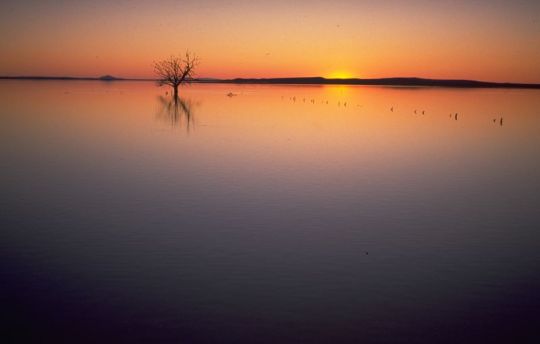
Harney Lake in the Malheur National Wildlife Refuge
You may have heard a little bit about the Malheur National Wildlife Refuge on the news lately. It’s truly a bit unusual to hear non-stop updates about conditions in a wildlife refuge in a remote part of Oregon, but how much do you actually know about the landscape? Why is there a Wildlife Refuge in eastern Oregon in the first place?
This photo was taken over part of the Malheur Wildlife Refuge in 1988. This spot is Harney Lake, one of several closed lake basins in the refuge.
Keep reading
53 notes
·
View notes
Photo
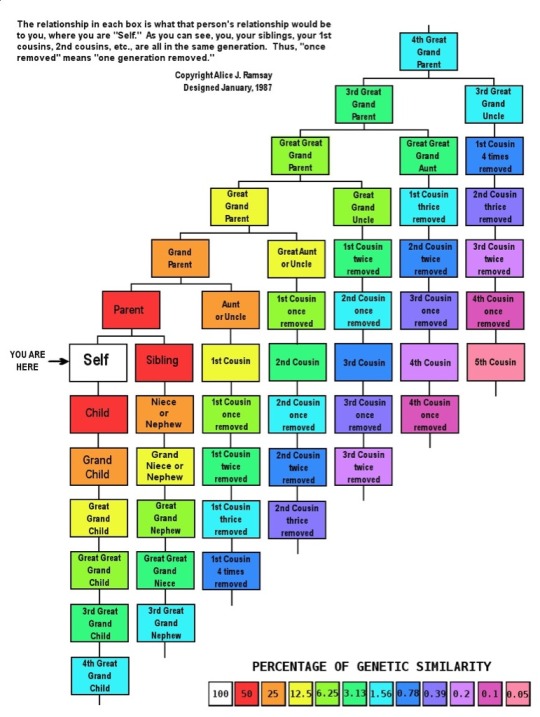
Who the Hell Is This Person Talking to Me and How Exactly Are They Related to Me: The Chart, just in time for your Thanksgiving gathering.
(Source: Apparently commenter “Platypus Man” from this Lifehacker post)
49K notes
·
View notes
Photo
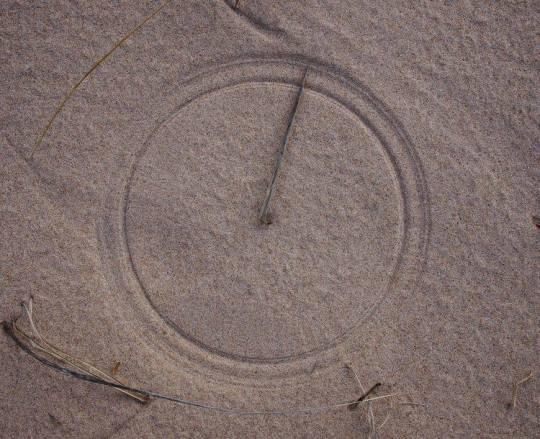
A circle in the sand
While it looks like some doodle that someone has done with a pointed stick or the like, these strange patterns are of natural origin, caused by wind and grass. Known as scratch circles, or Scharrkreise, they form rarely when howling gales beat a blade of dune grass around on its axis in the sand. Their potential for entering the sedimentary record is poor, as they are fleeting easily erased features, but examples have been found in sandstones from the Triassic (250-200 million years ago) Pont de Suert Formation of the Central Spanish Pyrenees.
Loz
Image credit: David Marvin via EPOD
Original paper, free access: http://bit.ly/1mgAwOG
601 notes
·
View notes
Photo
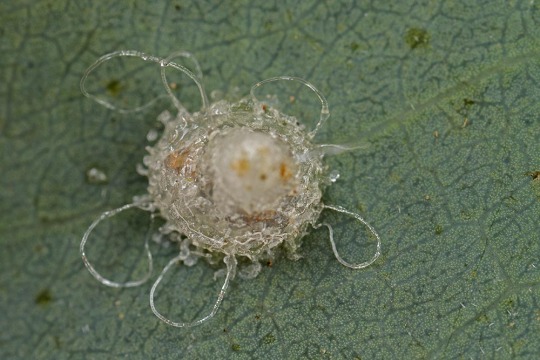
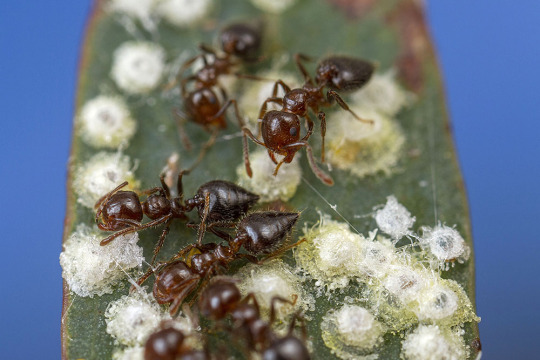
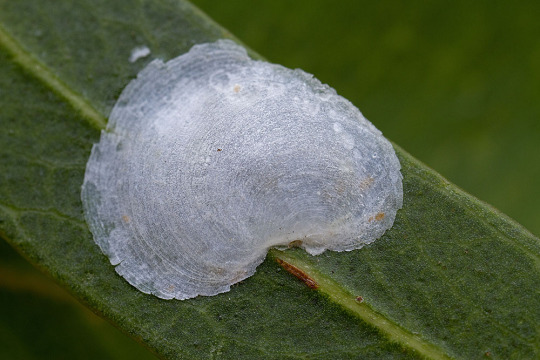
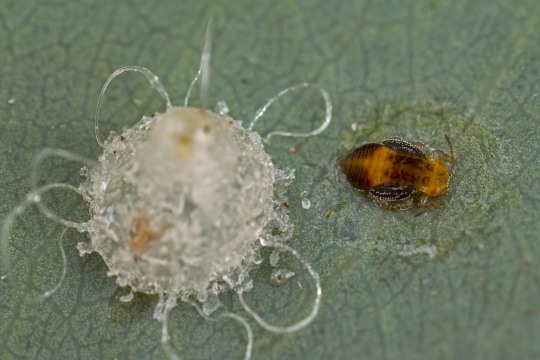
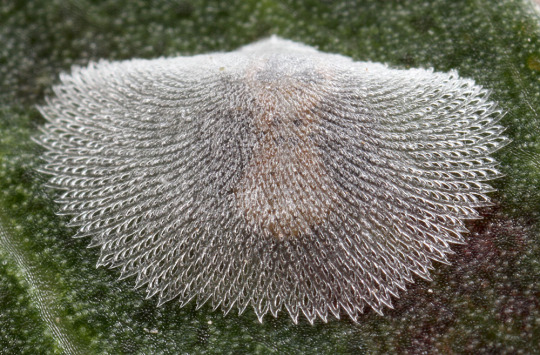


Today is Pyslli-Day…lerp forming Psyllidae.
Psyllids are tiny little bugs - true bugs, Hemiptera. Many are free-living, going about their daily lives crawling about on leaves and the like. Some make houses, sometimes galls, sometimes lerps. These are lerps, the lerp makers, and in the second image, lerp-tending Crematogaster ants. Lerps, composed of plant exudates, often sugary or starchy, are common on gum trees (Eucalyptus & Corymbia) here in Melbourne, Australia.
They are common on many genera of plants in many parts of the world, but here in Australia by far the most species are found on the eucalpyts.
Psyllids are often quite species specific in terms of the relationship between the host plant and the species of psyllid that feeds and produces the lerp, on it. The final image shows a lerp of Eucalyptolyma maideni. This species is found on two Corymbia species, C. citriodora (the lovely lemon scented gum) and C. maculata (spotted gum). Both these species are widely planted as garden plants in Australia and further afield and their pysllids have often traveled with them as far afield as California, for example.
They are, by the way, delicious - some like Glycaspis, better than others…
Some of the Many Little Sweet Things.
490 notes
·
View notes
Photo







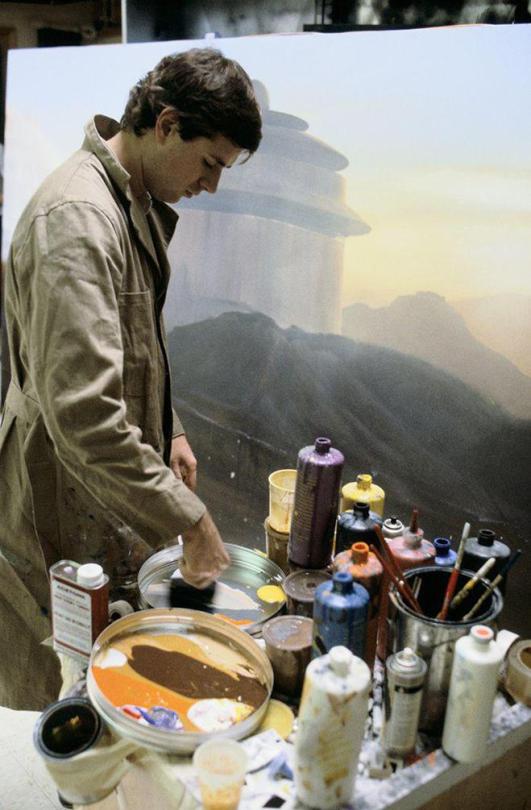


Before the computing era, ILM was the master of oil matte painting, making audiences believe that some of the sets in the original Star Wars and Indiana Jones trilogy were real when they weren’t. They were the work of geniuses like Chris Evans, Michael Pangrazio, Frank Ordaz, Harrison Ellenshaw and Ralph McQuarrie ! Forever thank you, to their handmade art and the work of their colleagues, that made us dream of impossible worlds and fantastic places across Earth and the Universe.
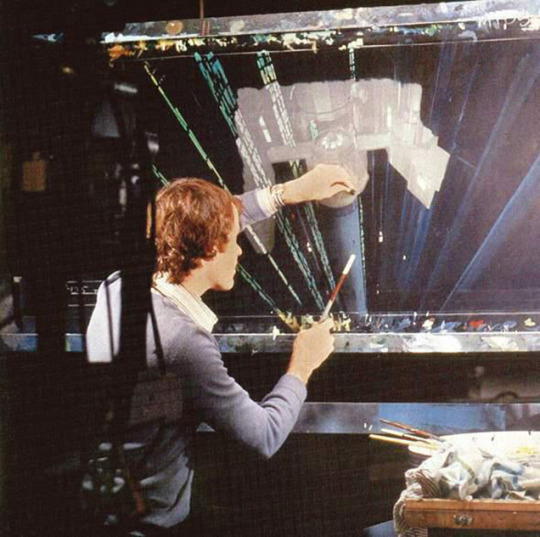





There are more background paintings on this article, featuring comments by the masters/artists themselves !
Some of the following pieces were made by other artists 2:








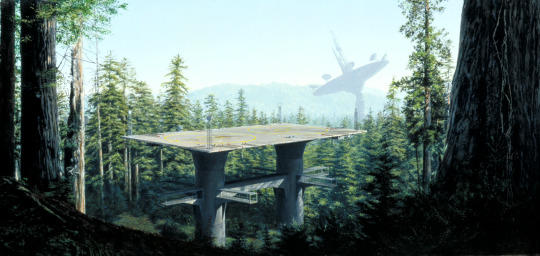



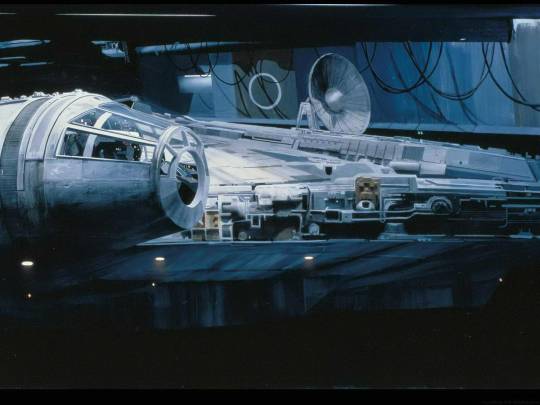
553K notes
·
View notes
Photo
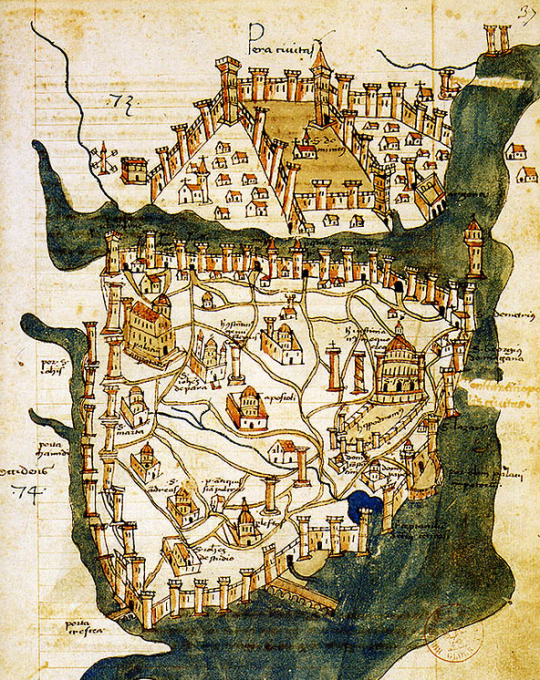
Map of Constantinople (1422) by Florentine cartographer Cristoforo Buondelmonti. The oldest surviving map of the city, and the only one that predates the Turkish conquest of the city in 1453
2K notes
·
View notes
Photo
This is called being an "extra-spectral color!" That means that magenta is a color our brains perceive but that is not based off a physical wavelength.
https://en.m.wikipedia.org/wiki/Spectral_color#Non-spectral_colors
Other extra-spectral colors include any grayscale color (white, gray, black), or any color formed by the mixing of a grayscale color with a spectral color (pink = white+red; brown = a mess of things; etc).
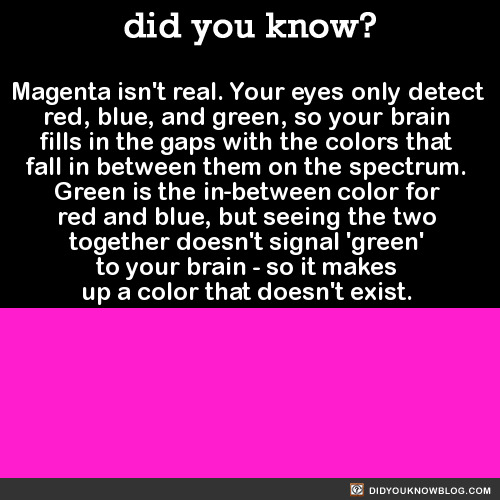

Magenta isn’t found anywhere on the visible color spectrum. It doesn’t even have a wavelength. Basically, it’s just the absence of green.


Source
169K notes
·
View notes



